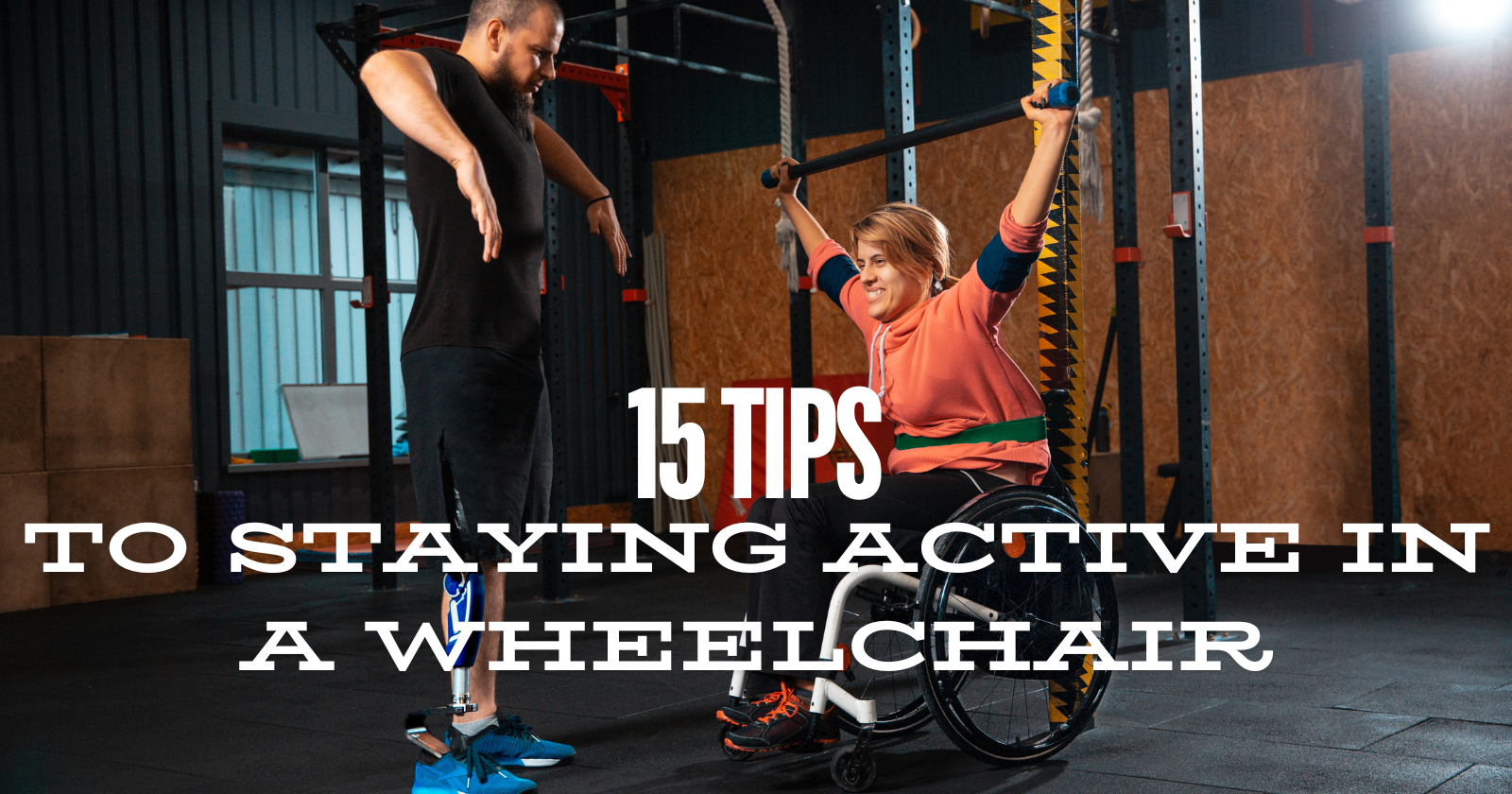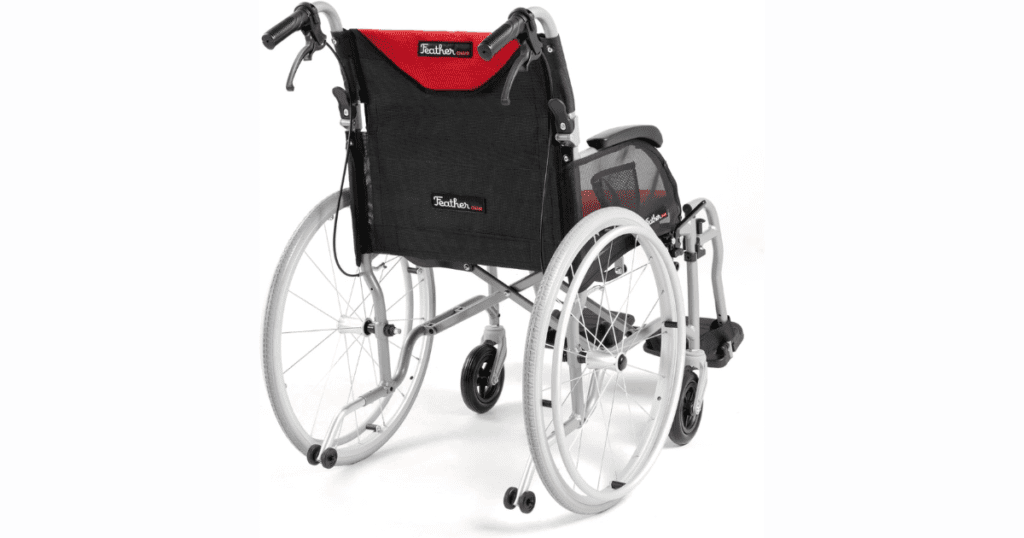Staying active in a wheelchair is not just about physical fitness; it’s about enhancing one’s quality of life, boosting one’s mental well-being, and maintaining one’s sense of independence.
Whether adapting to a new lifestyle or looking for fresh ideas to stay engaged, there are countless ways to keep moving and remain vibrant.
This guide will provide practical tips and strategies for embracing an active, fulfilling life in your wheelchair, from adaptive exercises to innovative sports.

1) Adaptive Yoga Classes
Adaptive yoga classes make yoga accessible for people who use wheelchairs. They modify traditional poses to fit individual needs and abilities.
Instructors in adaptive yoga classes are trained to work with different mobility levels. They use props like straps, blocks, and chairs to help students achieve poses safely.
Many yoga poses can be done while seated in a wheelchair. This includes breathing exercises, arm movements, and gentle twists. Some classes also incorporate floor work for those able to transfer from their chair.
Practicing adaptive yoga can improve strength, flexibility, and balance. It may also help reduce stress and pain for wheelchair users.
Regular yoga practice can boost mood and support overall well-being. It gives wheelchair users a chance to connect with their bodies in new ways.
Some gyms, community centers, and yoga studios offer adaptive yoga classes. Online classes are also available for those who prefer to practice at home.
Before starting, check with a doctor to ensure yoga is safe for your health conditions. Beginners should start slowly and listen to their bodies during practice.
2) Seated Tai Chi
Seated Tai Chi offers a gentle yet effective way for Staying Active in a Wheelchair users to stay active. This ancient Chinese practice combines slow, fluid movements with deep breathing and meditation.
Tai Chi can be adapted for people in wheelchairs, allowing them to perform the exercises while seated. It focuses on upper body movements and core engagement, helping to improve strength, flexibility, and balance.
Regular practice of seated Tai Chi can boost circulation, reduce stress, and enhance overall well-being. It’s particularly beneficial for seniors, as it can help maintain cognitive function and reduce the risk of falls.
To start, find a comfortable sitting position with good posture. Begin with simple arm movements, such as raising your hands slowly in front of you or to the sides. Coordinate your breathing with each movement.
Try more complex movements like arm circles or gentle twists as you become more comfortable. Remember to move slowly and mindfully, focusing on your body’s sensations.
Many community centers and senior facilities offer seated Tai Chi classes. Online videos can also guide beginners through simple routines. Start with short sessions and gradually increase duration as your stamina improves.

3) Wheelchair Zumba
Wheelchair Zumba brings the fun and energy of dance fitness to people who use wheelchairs. This adapted version keeps the lively Latin music and upbeat moves of traditional Zumba classes.
Participants can groove to the rhythm using upper body movements and wheelchair turns. The routines focus on arm swings, shoulder shimmies, and hand claps to get hearts pumping.
Many wheelchair Zumba classes welcome both wheelchair users and people without mobility issues. This inclusive approach helps build community and break down barriers.
Regular wheelchair Zumba sessions can boost cardiovascular health and improve upper body strength. The classes also offer mental health benefits by reducing stress and increasing social connections.
Wheelchair Zumba instructors modify moves to suit different ability levels. They ensure everyone can join in safely while getting a good workout.
Some fitness centers and community programs now offer wheelchair Zumba classes. Online videos are also available for those who prefer to dance at home.
4) Handcycling
Handcycling is a great way for Staying Active in Wheelchair users to stay active and fit. It’s a low-impact exercise that works the upper body and cardiovascular system.
Handcycles come in different styles. Some attach to manual wheelchairs, while others are standalone bikes. This variety allows users to find an option that fits their needs and abilities.
The sport has grown in popularity since the 1980s. Many now enjoy it as both a recreational and competitive activity.
Handcycling offers clear health benefits. It improves strength, endurance, and circulation. It can also boost mood and overall well-being.
For beginners, it is best to start with short rides. Focus on maintaining a steady pace rather than covering long distances. As fitness improves, riders can gradually increase their time and speed.
Winter doesn’t have to stop hand cyclists. Indoor trainers allow for year-round training, and some cyclists also use resistance bands to maintain arm strength during colder months.
Joining a hand-cycling group can make the activity more fun. It provides social interaction and motivation to keep riding regularly.

5) Water Aerobics
Water aerobics offers an excellent way for wheelchair users to stay active. The buoyancy of water reduces stress on joints and muscles, making it easier to move.
Many pools offer specialized classes for people with limited mobility. These classes use equipment like pool noodles and floats to help participants stay afloat.
Water exercises include arm movements, leg kicks, and core strengthening activities. The water’s resistance helps build strength and improve cardiovascular fitness.
Swimming laps is another option for those who are comfortable in the water. It provides a full-body workout and can be adapted to different skill levels.
Water-based activities also offer social benefits. They provide opportunities to meet new people and engage in group exercises.
Remember to check with a doctor before starting any new exercise program. This will ensure that the activity is safe for your specific needs.
6) Resistance Band Exercises
Resistance bands are great tools for wheelchair users to build strength and flexibility. They’re portable, affordable, and versatile.
Arm exercises with resistance bands can target different muscle groups. For example, users can do bicep curls by anchoring the band under their feet and pulling upwards.
Chest presses are another option. Wrap the band around the back of the chair and push forward with both hands.
Users can hold the band with hands wider than shoulder width for shoulder work. They slowly raise their arms above the head, then lower them back down.
Seated rows help strengthen the back muscles. Anchor the band to a fixed object and pull the handles towards your body.
Users can also do diagonal pulls. Hold the band at different angles and pull to work various upper body muscles.
It’s important to start with light resistance and gradually increase as your strength improves. Proper form is key to preventing injury and benefitting most from these exercises.
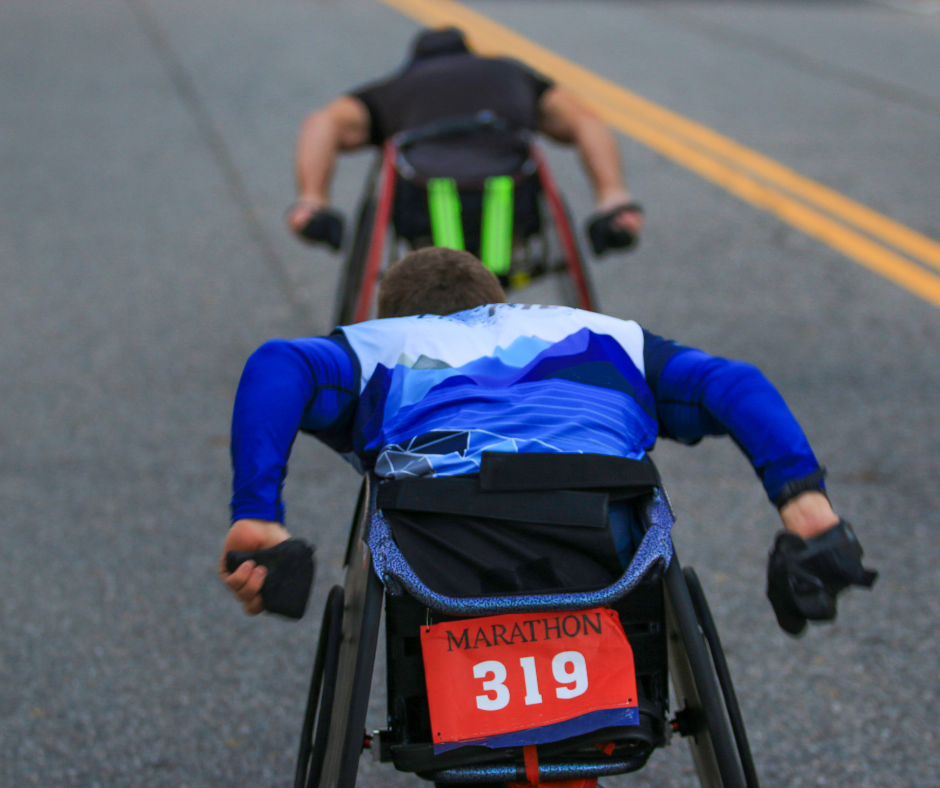
7) Adaptive Rowing
Adaptive rowing offers wheelchair users a great way to stay active and enjoy water sports. This activity can be done on indoor rowing machines or out on the water in specially designed boats.
Many rowing clubs now offer adaptive programs with equipment tailored for different abilities. Boats may have fixed seats, outriggers for stability, or other modifications to accommodate wheelchair users.
Rowing provides a full-body workout that builds strength and endurance. It engages the arms, shoulders, back, and core muscles. The rhythmic motion can also be relaxing and meditative.
Getting started with adaptive rowing is easy. Look for local clubs or organizations that offer programs. They can provide proper training and safety instruction.
Indoor rowing machines are another option for wheelchair users to try the sport. Many gyms have accessible equipment that can be used from a wheelchair.
Adaptive rowing competitions exist at various levels, from local regattas to the Paralympics. These competitions give athletes goals to work towards as they improve their skills.
8) Chair-Based Pilates
Chair-based Pilates offers a great way to stay active in a wheelchair. This exercise method adapts traditional Pilates moves for those with limited mobility.
Chair Pilates can improve posture, muscle tone, balance, and joint flexibility. It’s gentle on the body while still providing an effective workout.
Many exercises focus on the core, arms, and upper body. Seated leg lifts, arm circles, and shoulder shrugs are common moves in chair Pilates routines.
Breathing is an important part of Pilates practice. Proper breathing helps with relaxation and engages core muscles during movements.
Classes often last around 30 minutes, making them accessible for those who may tire easily or have limited time for exercise.
Regular practice can improve overall strength and flexibility and may also reduce pain and stiffness associated with sitting for long periods.
Chair Pilates is suitable for people of various fitness levels. Moves can be modified to fit individual needs and abilities.
Many resources exist for learning chair Pilates. Videos, classes, and instructors specializing in adaptive exercise can provide guidance.
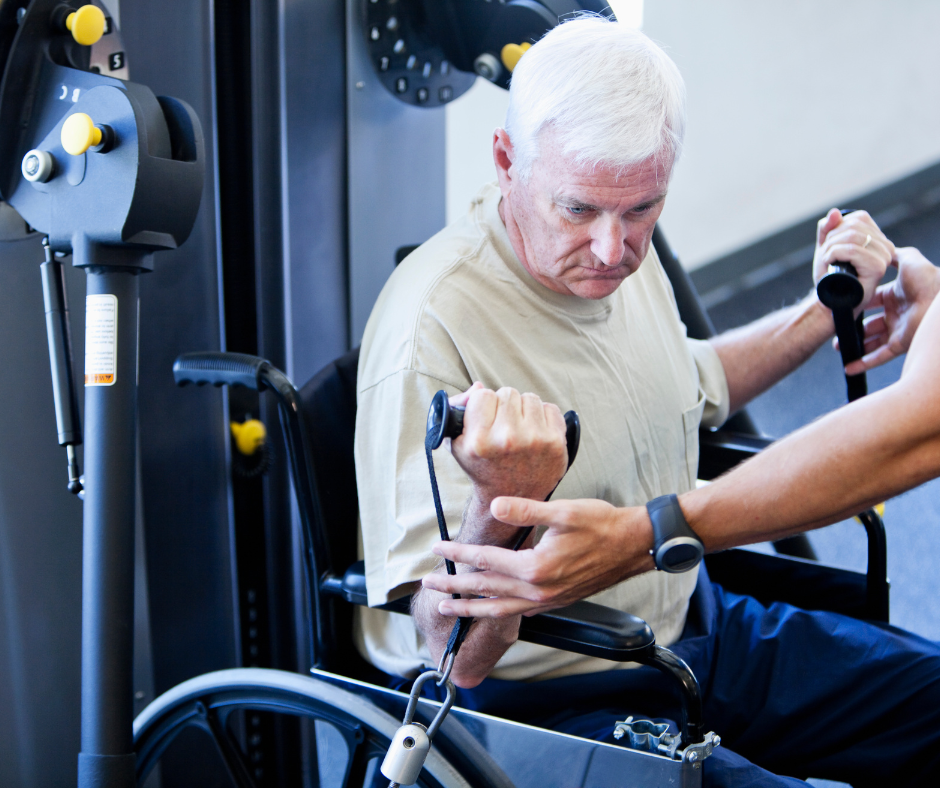
9) Modified Martial Arts
Martial arts can be adapted for wheelchair users. Many styles, such as karate, jiu-jitsu, and kung fu, have modified versions that focus on upper-body techniques.
These adapted martial arts help build strength, improve flexibility, and boost confidence. They teach self-defense moves that work from a seated position.
Some programs use special equipment like padded wheelchairs for sparring practice. Others focus on strikes and blocks that don’t require standing.
Wheelchair users can learn to use their chairs as a defensive strategy. This includes techniques for maneuvering quickly and using the chair to block attacks.
Many martial arts schools now offer classes specifically for people with mobility challenges. These classes provide a supportive environment for learning and practicing.
Regular training in modified martial arts can improve overall fitness and coordination. It also teaches valuable self-defense skills that wheelchair users can apply in real-life situations.
10) Story Time with Shoulder Press
Shoulder presses can be a fun way to stay active in a wheelchair. This exercise works the shoulder muscles and upper arms.
To do a shoulder press, start with light weights or resistance bands. Lift the weights above your head, then lower them to shoulder level. Repeat this motion several times.
Try doing shoulder presses while telling a story to make it more enjoyable. For each press, say one sentence of your tale. This combines physical activity with mental stimulation.
You can create a story about anything you like. Maybe it’s about a magical adventure or a funny memory. The key is to keep pressing as you speak.
This activity can be done alone or with friends. In a group, each person can add a sentence to the story during their turn. It’s a great way to exercise and be social at the same time.
Remember to use weights that feel comfortable. If you’re new to this exercise, start with no weights and use arm movements. Safety is important when trying new activities.

11) Gardening with Raised Beds
Raised garden beds offer wheelchair users a great way to stay active and enjoy gardening. These elevated structures bring plants within easy reach, making them ideal for people with limited mobility.
Experts recommend that raised beds be at least 30 inches high for comfortable wheelchair access and around 22 inches wide to allow easy reach across the entire bed.
Soil quality is easier to control in raised beds. This means gardeners can create the perfect growing environment for their chosen plants.
Long-handled tools and watering cans with extended spouts help reduce the need to stretch or bend. Sturdy plant supports can also simplify tending to taller plants.
Raised beds can be part of a larger accessible garden design. Smooth, wide paths between beds allow easy wheelchair movement throughout the space.
Some gardeners also find hanging baskets useful. These can be positioned at eye level, adding vertical interest to the garden while remaining easy to tend.
With the right setup, wheelchair users can grow flowers, vegetables, and herbs like any other gardener. It’s a fulfilling activity that provides exercise, fresh air, and the satisfaction of nurturing plants.
12) Wheelchair Basketball
Wheelchair basketball is an exciting sport that offers a great way to stay active. It combines physical fitness with teamwork and strategy.
Players use special wheelchairs designed for quick turns and fast movements on the court. The rules are similar to regular basketball, with some adjustments for wheelchair use.
The sport helps build upper body strength and improves cardiovascular health. It also enhances hand-eye coordination and spatial awareness.
Wheelchair basketball is very inclusive. People with various disabilities can play together; even those without disabilities can use sports wheelchairs.
Many communities have wheelchair basketball leagues or teams. Joining a team provides regular exercise and a chance to make new friends.
The sport has been part of the Paralympic Games since 1960. It continues to grow in popularity worldwide, with professional leagues in some countries.
Local adaptive sports programs often offer introductory sessions for beginners. These can be a good way to try out the sport and learn basic skills.
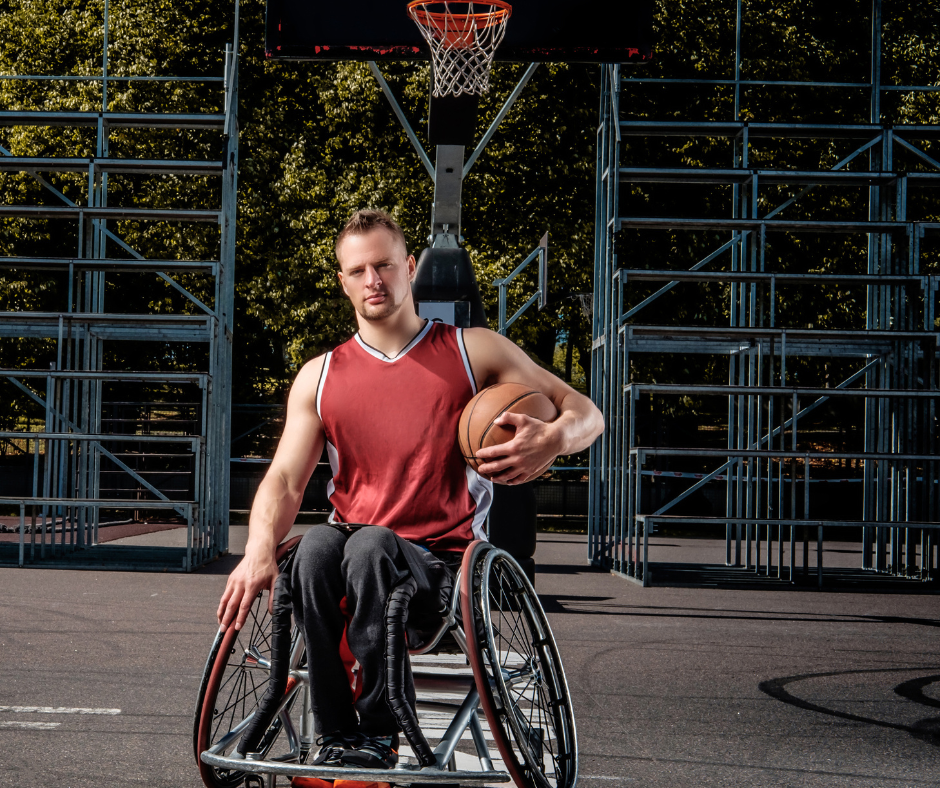
13) Mindfulness Meditation
Mindfulness meditation can be a great way for wheelchair users to stay mentally and emotionally active. This practice involves focusing on the present moment and observing thoughts without judgment.
To start, find a quiet space where you won’t be disturbed. If possible, meditate in your wheelchair or transfer to a comfortable seat.
Begin with short sessions of 10-15 minutes. Close your eyes and focus on your breath. Notice the sensation of air moving in and out of your body.
As thoughts come up, acknowledge them and let them pass without getting caught up. Then, gently bring your attention back to your breath.
You can also try body scan meditations. Start at your toes and slowly move your attention up through your body, noticing any sensations.
Regular mindfulness practice can help reduce stress, improve focus, and increase overall well-being. It’s an activity that’s accessible to wheelchair users of all abilities.
Consider using guided meditations specifically designed for people with mobility limitations. These can provide helpful cues and adaptations.
14) Adaptive Volleyball
Adaptive volleyball offers a great way for wheelchair users to stay active and enjoy team sports. Players can participate from their wheelchairs using modified rules and equipment.
The court size is often reduced to make it easier to move around. A lower net height allows players to hit the ball over while seated. Some versions let the ball bounce once before returning it.
Lighter volleyballs or beach balls may be used. This makes serving and passing easier for those with limited arm strength or mobility. Players can sometimes catch and throw the ball instead of volleying.
Adaptive volleyball improves upper body strength, coordination, and reflexes. It also provides social interaction and friendly competition. Many wheelchair sports leagues and adaptive recreation programs offer volleyball.
With a few tweaks, people of varying abilities can play together. This inclusive approach lets friends and family join in the fun. Regular practice can boost confidence and physical fitness for wheelchair users.

15) Fencing for Wheelchair Users
Wheelchair fencing is an exciting sport that combines skill, strategy, and quick reflexes. It has been part of the Paralympic Games since 1960, offering a great way for wheelchair users to stay active and competitive.
Participants use specialized equipment, including protective gear like masks, gloves, and puncture-resistant jackets. The sport uses three types of swords: foil, épée, and saber. Each has its own rules and techniques.
Wheelchair fencers compete in specially designed chairs that are fixed to the floor. This setup allows for safe and fair matches between opponents. The sport helps improve upper body strength, coordination, and mental focus.
Beginners can find local adaptive sports programs or fencing clubs offering wheelchair classes. Many organizations provide equipment and training to help new fencers get started.
Fencing offers both physical and mental benefits. It provides a good workout for the arms and core muscles. The sport also sharpens decision-making skills and reaction times.
Wheelchair fencing is suitable for people with various mobility levels. It promotes inclusivity and offers a chance to compete at local, national, and international levels.
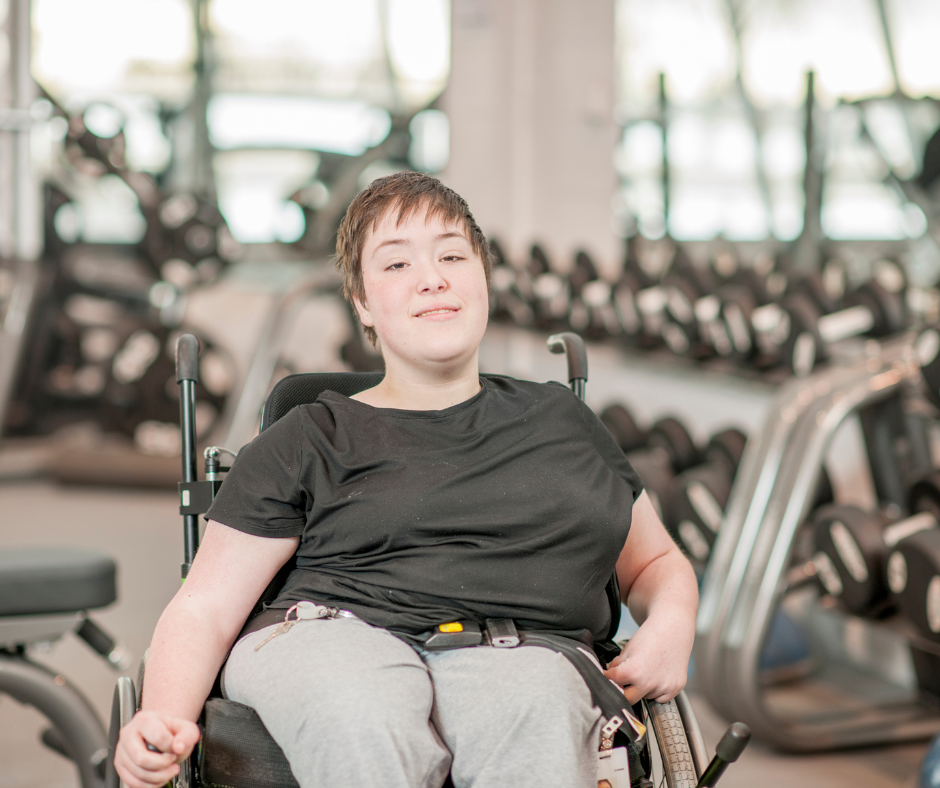
Benefits Of Staying Active In A Wheelchair
Staying active in a wheelchair brings many positive changes to the body and mind. Regular exercise boosts health, builds strength, and lifts mood.
Physical Health Benefits
Wheelchair exercises improve heart health and blood flow. They help control weight and lower the risk of weight-related health issues. Strong arms and core muscles from regular workouts make daily tasks easier.
Staying active also keeps joints flexible and reduces pain. Shifting body weight can help prevent pressure sores. Better posture from core exercises eases back pain and breathing.
Regular movement improves digestion and bowel function. It boosts the immune system, helping fight off illnesses. Consistent physical activity also often improves sleep quality.
Mental Health Advantages
Exercise releases feel-good chemicals in the brain, lifting mood and easing stress. It can help manage anxiety and depression symptoms. Staying active boosts self-esteem and body image.
Regular workouts sharpen focus and memory, improve problem-solving skills, and foster creativity. Social exercise classes also build friendships and community connections.
Setting and reaching fitness goals builds confidence. It creates a sense of control and independence. Active hobbies add fun and purpose to daily life.
Physical activity can reduce feelings of frustration or isolation. It offers a healthy way to cope with tough emotions. Regular exercise often leads to a more positive outlook on life.
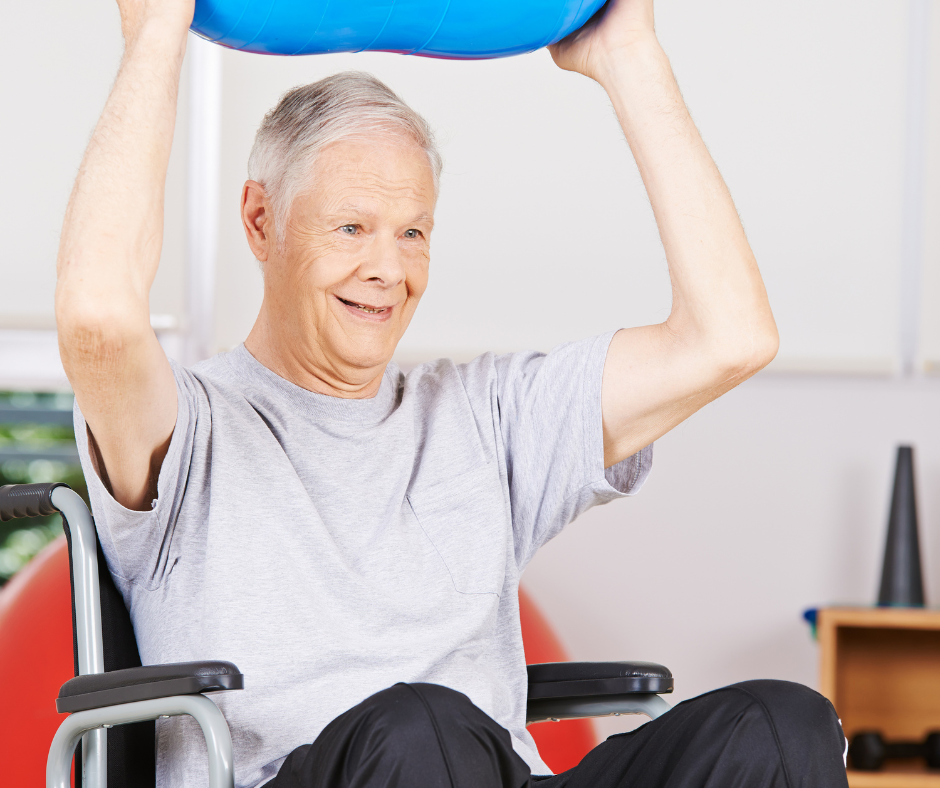
Choosing The Right Wheelchair For Exercise
Picking the right wheelchair for exercise is key to staying active and healthy. The type of chair and its features can make a big difference in your workout routine.
Manual vs. Electric Wheelchairs
Manual wheelchairs are great for upper-body workouts. They help build arm and shoulder strength through self-propulsion, and users can get a cardio workout by pushing themselves around.
Electric wheelchairs are better for those with limited upper body strength. They allow users to save energy for other exercises. Some electric models have adjustable speeds, which can be used for interval training.
Both types can be used for stretching and seated exercises. The best choice depends on your physical abilities and fitness goals.
Accessories For Increased Mobility
Workout-friendly accessories can boost your exercise options. Here are some helpful add-ons:
- Removable armrests for easier side movements
- Adjustable footrests to support leg exercises
- Anti-tip bars for added stability during stretches
- Wheelchair gloves to prevent blisters from pushing
- Attachable resistance bands for strength training
Sports wheels with a cambered design can improve turning and stability. A cushion with good support helps maintain proper posture during workouts.
Remember to pick accessories that fit your specific needs and exercise plans. The right gear can make your workouts safer and more effective.
Creating A Personalized Exercise Routine
A tailored exercise plan helps wheelchair users stay active and healthy. It takes into account individual needs, abilities, and goals.
Consulting With Healthcare Professionals
Talk to a doctor or physical therapist before starting any new exercise routine. They can assess your health and mobility and help create a safe and effective plan.
These experts can suggest exercises that fit your needs. They may recommend specific movements or equipment. Their input helps avoid injury and maximizes benefits.
Keep in touch with your healthcare team. Regular check-ins allow for adjustments to your routine as needed.
Setting Realistic Goals
Start by picking goals that match your current abilities. This builds confidence and keeps you motivated.
Some good initial targets might be:
- Exercising for 10 minutes a day
- Doing arm circles 3 times a week
- Stretching each morning
Write down your goals. Put them where you can see them often. This serves as a daily reminder.
Track your progress. Use a simple chart or app. Seeing improvements can boost your drive to keep going.
Adjust your goals as you get stronger. Slowly increase the time or difficulty of your exercises.

Wrapping Up
Staying active in a wheelchair may require creativity and determination, but the rewards are well worth the effort.
Incorporating the tips and strategies we’ve discussed can enhance your physical fitness, boost your mood, and maintain your independence.
Remember, staying active is not just about movement; it’s about embracing life’s possibilities and finding joy in every moment.
No matter your abilities, there are endless opportunities to stay engaged, healthy, and fulfilled. So, take that first step—or roll—toward a more active lifestyle today.
How do you stay fit if you’re in a wheelchair?
Junk food and excess sugar aren’t worth the calories! To maintain a healthy lifestyle, try eating clean foods like vegetables instead. You’ll feel better than ever before—your body will thank you for it, with increased energy levels (which can also help when exercising) and improved moods that improve mental clarity throughout each day’s tasks at work or home.
Dive Deeper
- Are Wheelchair Ramps FSA Eligible?
- Are Wheelchair Ramps HSA Eligible?
- Will Medicare Cover Wheelchair Ramps?
